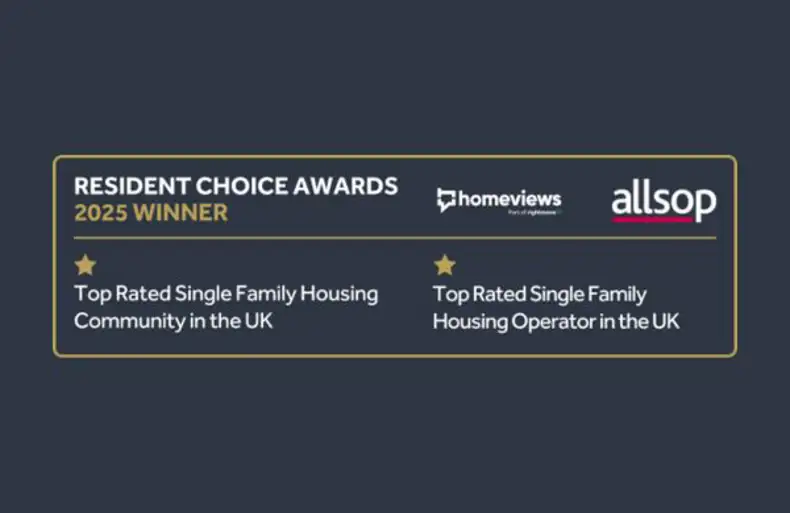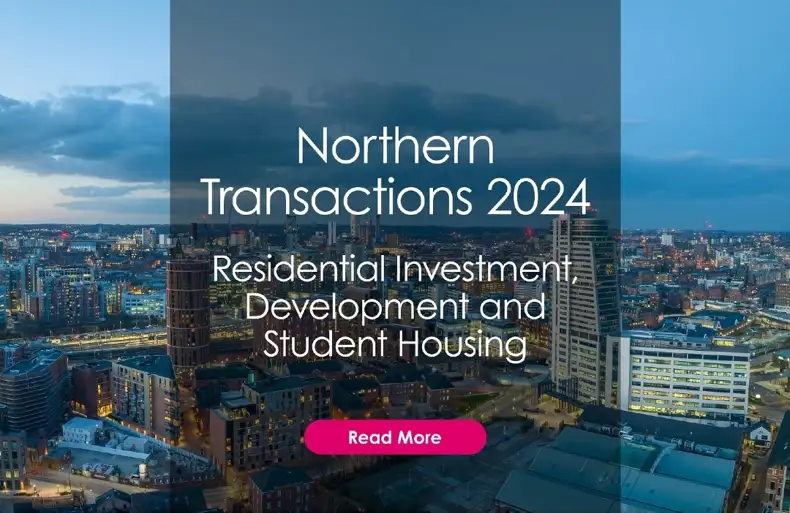During a rollercoaster year of unimaginable uncertainty and turmoil for the UK real estate industry, one subsector has proven itself to be far more resilient than anyone ever imagined, as it outshone huge areas of the market and attracted a raft of new investors searching for a safe-haven for their capital.
Even before the pandemic hit, the residential sector was maturing apace and we started to see a blurring of lines between some of the historically distinct areas: between investment and development, between living sectors like student and Build to Rent (BTR): the crossover was suddenly both evident and extensive.
Our highly integrated business streams across the residential sphere, give us the opportunity to look at the market from a more holistic perspective, prompting a renaming of our offering to Residential Transactional and Living Markets.
We are now seeing a wall of capital on the side-lines focussing on the residential and living space ranging from private individuals through to institutional investors. The maturity of the student sector has created a vast market with a multiplicity of asset types. With the BTR market following suit with the emergence of stabilised blocks, there are many parallels evident with the creation of primary and secondary assets. Our standing in the traditional residential investment and development market, allied to our growing status in the BTR market gives us a strong understanding of the total breadth of that space and the different requirements of investors.
As our clients continue to entrust us to be their eyes and ears on the ground and to help them stay ahead of the game, we’d like to share with you our bird’s eye view of current trends and opportunities across the market:
Development
The repurposing of retail assets has been an often-discussed trend over the past year and despite the travails of the planning system, the more pragmatic policy approach that we are seeing for the high street vs what we saw on office buildings, has drawn extensive capital to this space.
In a hugely positive move for the development market, the new E class and Permitted Development (PD) rules will create significant opportunity for smaller asset sizes, which we are regularly transacting through a hybrid offering with our commercial auction team.
Scale is very much the watchword for large parts of the development market. The stamp duty and Help to Buy initiatives have kept sentiment strong and encouraged greater interest in the strategic land sector. A period of prolonged positivity, allied to the potential BTR single family housing exit opportunities, will reinforce interest in this area.
Subject to planning deals are very attractive to the development market as they allow the incoming developer to get control and only speculate planning fees early in the process. We are increasingly helping clients enter joint ventures or subject to planning deals to allow premium prices to be achieved and maximised consents to be obtained.
We are seeing escalating demand from privately-owned commercial owner occupiers who are thinking outside the box in order to futureproof businesses; they are now looking at developing site’s for their own use, often with residential above. Many landowners see this as an opportunity to de-risk the commercial elements, which are unattractive to housebuilders.

Residential Investment
The investment market is showing positive signs following a difficult year, as landlords appear to be taking on board demands from investors and the market. This is particularly evident with mixed-use buildings where a number of possible opportunities exist around change of use of ground floor and conversion or extension of the upper floors.
Another area of demand is for large-scale portfolios of houses that are high yielding with exits on lease deals, due to the attractive return on investment. This space has a significantly greater buyer pool with Housing Associations, Councils and increasingly institutional capital. In the sub £5m bracket we are seeing a much more varied pool of buyers with an increase in private individuals or family offices that previously invested in commercial assets. This purchaser demographic is attracted by both yield and value add angles.
There are greater opportunities for residential investment across the new build housing sector with SME housebuilders developing houses for funds on schemes of 50 units and not just large scale BTR. Whilst the new build investment sector has attracted a substantial amount of focus, there is still a strong market for well-managed, good quality secondary standing stock of all sizes and indeed, ground rent portfolios, despite recent government intervention.
BTR
As a relatively new asset class in the UK, the BTR market has become a competitive marketplace as investor interest grows with each demonstration of counter cyclical strength the market has shown. Although there are approximately 54,000 units now completed in the UK, BTR is still viewed as a somewhat immature market, which many investors are keen to enter.
The emergence of BTR Single Family Housing has brought another dimension to the market, and one that is likely to benefit from strong institutional demand, with a number of bespoke schemes in the pipeline. The regions have performed well and seen yield contraction throughout the pandemic period, buoyed by the performance of assets in the stabilised investment market. Allsop currently has circa £500m worth of forward funding transactions at a progressed stage, a sizeable proportion of which are joint ventures that we have facilitated between landowners and contractors who want exposure to the sector. The repurposing agenda on the high street that is integral to the development market is also central to the BTR discussion. We are advising a number of funds on repurposing buildings, which by virtue of their location, accessibility and scale exhibit all the right characteristics for BTR development.
Student
Overall demand for student investment opportunities is as strong now as it has ever been, with new investors entering both the PBSA and HMO markets adding depth to a buying pool swimming with established investors looking to capitalise on the right opportunities. As we move closer to Q3, we will see the market strengthen across the board as values benefit from the clarity afforded by AY21-22 occupancy rates.
“we are now seeing a wall of capital on the side-lines focussing on the residential and living space”
There is growing demand for operational PBSA opportunities with value-add potential and a small but significant shift of positive sentiment towards some secondary locations where the UK demographic outlook and predicted growth of international students is providing renewed confidence across a wider spectrum of university destinations.
Interest for prime regional and in particular London development opportunities both with and without planning is evidently high, albeit peripheral sites can struggle for appetite as the sector continues to mature.
Deals of a forward funding and forward commit nature have slowed-up a little and there has been a thinning of the investor pool creating a rather selective feel to interest levels. Covid possibly hit this sector of the student market hardest but we expect a full recovery in the months ahead.
The weight of demand is favouring larger scale investment opportunities; operational portfolios and single assets comprising >250 beds are trending the highest and yields remain stable. However yields have pushed out for smaller PBSA assets and properties of a converted nature where investors struggle to gain optimum operational efficiency levels.
The repurposing agenda we are seeing is both from commercial to residential and living markets but also within the residential and living markets themselves. This is where the blurring of lines has become so apparent and creates major opportunities for you all, as our clients. With what we all hope is a golden period of sentiment emerging, now is an excellent time to scrutinise assets and consider their optimum uses and form.




